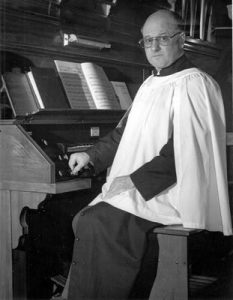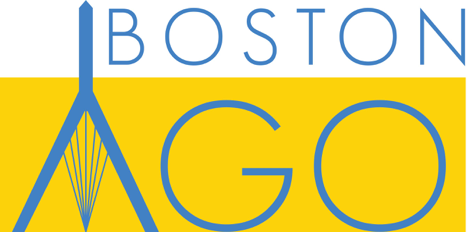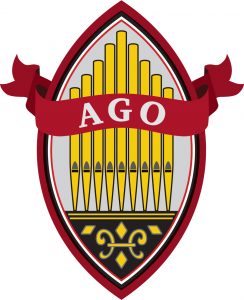This page contains the Newsletters of the Boston Organ Club from 1965 through 1987.
More information to come
The Boston Organ Club was the brainchild of Edgar Boadway, who was an organist and an opinionated and very knowledgeable organ historian. He played for a church in Claremont, NH. He organized meetings and over several decades he wrote the newsletter of the Boston Organ Club, a full set of which now resides in the Organ Library and is digitized below for your reference. The newsletter contained information about New England instruments, their builders, their history, and other pertinent details. He or others organized monthly “organ crawls” to various places. If an organ recital was on the schedule, that would become the centerpiece. He died at home in 2016, ironically while the Organ Historical Society’s national convention was being held in Philadelphia.

To learn more about Ed Boadway, click here to expand this section
EDGAR A. BOADWAY, JR., ae. 80, often referred to as one of “America’s foremost organ historians,” died peacefully at home in Claremont, New Hampshire on June 29, 2016. He was born in Boston on January 14, 1936, the oldest son of Edgar Atkinson (1901-82) and Sammie T. (n. Graham) Boadway (1904-2002). His only sibling, Raymond Hensel Boadway (1937-95), predeceased him by more than two decades. Ed never married, and although his obituary as published in the July 2 issue of the Claremont Eagle Times was atypically cursory, he had a marked influence on thousands of people during his many decades in church music, and as an author, editor, organ builder, performer, proof-reader, researcher, but especially as a teacher. Ed taught everyone he came in contact with, and for those fortunate enough to spend time with him on a continuing basis, he taught a lot.
After growing up in southern Quebec, Ed attended high school between September 1953 and the spring 1955 at the Kimball Union Academy in Meriden, New Hampshire. That fall, he entered the University of Vermont at Burlington, and graduated four years later on June 14, 1959 with a BA degree in English. Some years later, he did graduate work at the University of New Hampshire. Ed was drafted into the U.S. Army on July 13, 1959, completed basic training at Fort Dix, and later served in Washington, D.C. and in Kitzingen, Germany. After it was discovered that he could type 60 words a minute, a skill not shared by many of his fellow recruits, he was assigned clerical duties for the remainder of his service. Years later, he sheepishly admitted to playing chapel services on a Wurlitzer “organ” at Fort Dix and a Hammond at the Pentagon, although those instruments were not much to his liking.
Between 1962 and ’66, Ed took a job with the Andover Organ Company in Methuen, Massachusetts, working alongside his colleague and friend Robert J. Reich. From 1966 to ’68, he taught at the Thomas More School in Harrisville, and between 1969 and ’70 at the Crotched Mountain School for the Deaf in Greenfield, both in New Hampshire. Between 1970 and ’83, he was an English teacher at the Claremont Middle School, teaching a generation of the city’s youth to write in complete and grammatically correct sentences. Later in life, Ed worked as an organ technician, but his specialty was restoring antique American reed organs. He was a conscientious craftsman, and was widely respected for the quality of his work.
Ed was also a devoted churchman and served a number of New England congregations as organist. Between 1968 and September 1971, he worked at Grace United Methodist Church in Keene, New Hampshire, then the home of a splendid 1869 Steer & Turner organ. In October 1971, he accepted an appointment at the First Baptist Church of Newport, New Hampshire, playing on a two-manual Hook & Hastings organ, Op. 1776, 1897, remaining until the fall 1972. Beginning with Christmas 1972, he became the organist at St. Paul’s Episcopal Church, Windsor, Vermont, home of the Organ Historical Society Emblem organ. In 1973, he started a thirty-four-year tenure as organist and choirmaster at St. Mary’s R.C. Church in Claremont, retiring early in 2007. St. Mary’s owned a fine, two-manual organ by Jesse Woodberry & Co., Op. 136, 1895. His final appointment was at the United Church of Ludlow, Vermont, where he played on an 1898 organ by Geo. S. Hutchings of Boston. Toward the end of his life, Ed asserted that he had played for “some 35,000 funerals, rehearsals, Masses, services and weddings,” and most of those were on tracker organs he admired.
His passion for old American pipe organs was a continuing thread throughout his life. Beginning at age 12, he played on a Hook & Hastings, Op. 1202, 1884, built for the Methodist Episcopal Church, Stanstead, Quebec. A year later, he was substituting on an 1890 Woodberry & Harris organ in the Congregational Church, Newport, Vermont. At age 20, he became a founder and life-long member of the Organ Historical Society, serving the organization under many guises. He was the first OHS Secretary, wrote the first set of OHS Bylaws, and was elected president of the organization in 1973. He served as the chairman of the Cape Cod convention in 1966, wrote the organ descriptions for the Saratoga convention in 1967, and served on four convention committees: Worcester, Massachusetts 1968, Central Vermont 1972, Keene, New Hampshire 1974, and Northern Vermont 2013. He was the impetus behind establishing the Archives (now the Organ Historical Society Library and Archives) and was the first to index all the old organs in a given state. That ground-breaking effort evolved into the OHS Extant Lists and later became national in scope. He received the Society’s Distinguished Service Award in 1990, and was elevated to Honorary Membership on June 28, 2013, the highest commendation the organization bestows.
Ed authored one book, A Brief History of the Roman Catholic Church of St. Mary in Claremont, New Hampshire in 1995, and played a major role in the production of The Bicentennial of the Pipe Organ in Vermont, published by the OHS in June 2013. His catalog of “all” the pipe organs in the Green Mountain State from 1813 to the present is a model of accuracy, brevity and precision.
Ed was a loyal member of the Vermont Chapter of the American Guild of Organists. He served as Dean between 2000 and 2004, and for a while edited the newsletter, The Vermont Organist, beginning in 1989. He was the founder of the Boston Organ Club, and he wrote and produced the Boston Organ Club Newsletter from its inception in 1965 until 1995, a journal still respected for its accurate coverage of organ news. He was a cherished guest at convocations of organists, and lectured on “The Historical Organs of Vermont” to a gathering of the St. Wilfrid Club in New York City on October 26, 2009. He was a trustee and supporter of the Estey Organ Museum in Brattleboro, and an enthusiastic patron of the Vermont Historical Society.
Ed was notorious for his abhorrence of technological advances. He did not own a car much of his life, did not install a telephone until 1968, and was among the “last” to use a computer. When challenged, he sputtered that “His brain was his computer and his hands and his Royal typewriter were his printer!” Ed was profoundly literate. He adored black-walnut Victorian furniture, ecclesiastical architecture, and was an avid collector of American organabilia. His voluminous collection, known to his colleagues and friends as the Boadway Archive, encompassed thousands of books, directories, histories, manuscripts, newspapers, photographs, recordings, stereo slides, and realia from American pipe organ manufacturers. Following his death, his collection was distributed at his request to the Estey Organ Museum, the Massachusetts Historical Society, the Paddock Music Library at Dartmouth, the Organ Historical Society Library and Archives, and the Vermont Historical Society. He was intensely private; a miniature sign hung conspicuously over his doorbell and stated firmly: “Visitors by appointment only!” Ed was known for his quick wit, his “occasional” penchant for intransigence, and he did not suffer fools gladly with either grace or silence. He was a gourmand, delighted in exotic cookbooks, and had a particular affinity for German Riesling. Ed was a cultured and gracious host: an invitation to “Manhattans in the Boadway Parlor” was one of the more coveted social events in Claremont. He was widely acknowledged for his penetrating intelligence, and was mentally sharp until the day of his death.
Ed is survived by a nephew, Edward A. Boadway and family of Essex Junction, Vermont, hundreds of faithful students, and a loyal coterie of colleagues and friends. He was interred on August 24, 2016 in the Athearn Cemetery in Anson, Maine, beside his brother, parents, grandmother, and several other members of the Boadway family. Requiescat in pace.
[table “11” not found /]

